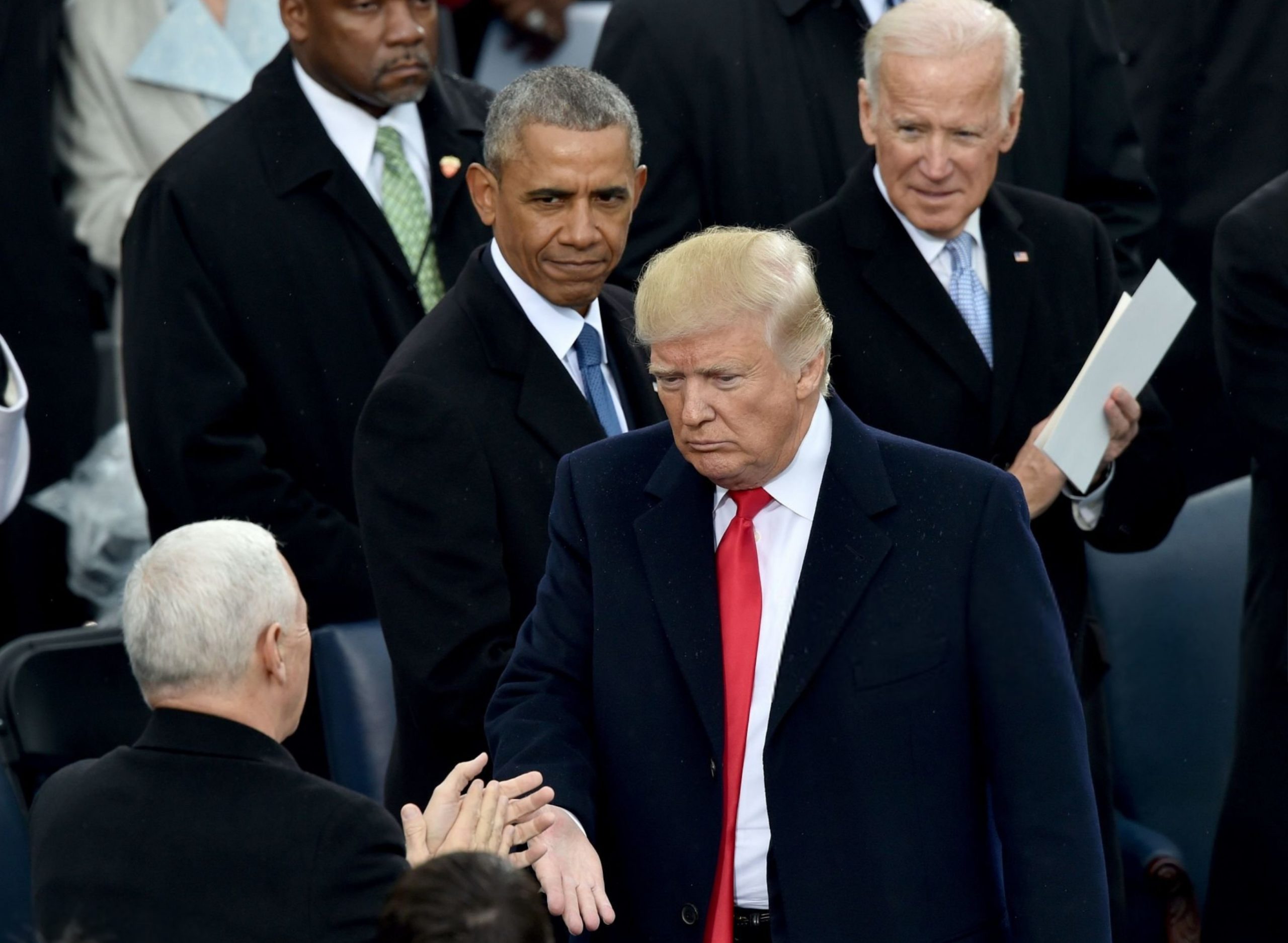
The Evolution of American Foreign Policy
From Obama and Trump to Biden
By | Radulf Mohika ,
JANUARY 03, 2025
The National Security Strategy (NSS) documents are critical blueprints that outline each administration’s foreign policy priorities, strategic vision, and response to global challenges. Serving as a compass for the nation’s strategic position, the NSS guides U.S. approaches in an era of geopolitical rivalry, particularly with Russia and China, as the U.S. seeks to maintain global influence and address threats to its national interests.
The U.S.’ position in great power competition has evolved over time, shaped by shifting international dynamics and domestic priorities. Recent decades have seen the rise of China as a global economic and technological power and the resurgence of Russia as a military aggressor, making strategic competition with these nations central to American foreign policy.
The Obama administration’s 2015 NSS emphasized multilateralism, diplomacy, and cooperation, addressing Russia’s annexation of Crimea and China’s growing economic and military influence in the Asia-Pacific. The Trump administration’s 2017 NSS adopted an “America First” approach, focusing on trade imbalances with China and cybersecurity threats from Russia. The Biden administration’s 2022 NSS returned to alliances and multilateral leadership, responding to Russia’s invasion of Ukraine and engaging in strategic competition with China across technology, defense, and governance.
Obama’s National Security Strategy (2015)
President Obama’s 2015 National Security Strategy emphasized strong American leadership rooted in economic strength, alliances, and values. Prioritizing multilateral cooperation and a rules-based international order, the strategy sought to integrate rising powers responsibly while addressing challenges like terrorism, climate change, nuclear proliferation, and global economic instability. Obama’s approach balanced leadership with strategic patience, using diplomatic, economic, and military tools to achieve long-term stability and prosperity.
Russia’s annexation of Crimea in 2014 and destabilization of Ukraine were identified as threats to international norms. The U.S. responded with coordinated sanctions alongside European allies to deter further aggression and uphold Ukraine’s sovereignty, reaffirming NATO’s central role in European security.
Obama’s strategy acknowledged China’s economic rise while managing its growing influence. The “Rebalance to Asia” aimed to deepen ties with regional allies and ASEAN, promote trade through the Trans-Pacific Partnership, and ensure freedom of navigation in the South China Sea. Cooperation with China on global issues like climate change was prioritized, but vigilance remained regarding its military modernization and territorial assertiveness.
Defined by multilateralism, alliances, and diplomacy, Obama’s policies promoted international coalitions to address Russian aggression, ISIL, climate change, and health security. The strategy emphasized balancing military strength with economic leadership and soft power tools, focusing on strengthening alliances in Europe and Asia while leveraging sanctions, economic initiatives, and limited military engagement to address threats. The 2015 strategy reflected confidence in a cooperative international order underpinned by American leadership.
Trump’s National Security Strategy (2017)
The 2017 Strategy outlines President Trump’s “America First” approach, prioritizing sovereignty, economic growth, and military strength. Built on principled realism, it focuses on advancing American interests through competition and rejects the assumption that engagement with rival powers like Russia and China would integrate them into a rules-based international order. The strategy is structured around four pillars: protecting the American people, promoting prosperity, preserving peace through strength, and advancing U.S. influence globally.
The NSS identifies Russia as a revisionist power using asymmetric tools like cyber operations, election interference, and disinformation to undermine U.S. influence and destabilize democratic institutions. Russia’s actions in Europe, particularly efforts to weaken NATO and regional security, are seen as major challenges. While the strategy calls for deterring Russian aggression, it remains open to limited cooperation where mutual interests align, provided U.S. sovereignty and security are protected.
China is framed as a strategic competitor and a significant economic and technological threat. The NSS criticizes China’s unfair trade practices, including forced technology transfers, intellectual property theft, and market-distorting subsidies, describing these as economic aggression undermining U.S. prosperity. China’s military expansion and assertive actions in the Indo-Pacific region are viewed as direct challenges to U.S. influence. The strategy calls for countering China’s global leverage while promoting fair and reciprocal trade.
Trump’s policies relied on unilateral actions, favoring harsh economic measures like tariffs and trade wars to address trade imbalances. The strategy emphasizes rebuilding U.S. military strength to deter emerging threats and prioritizes sovereignty by rejecting international agreements deemed unfair or harmful to U.S. interests. This competitive approach reflects a focus on economic protectionism, military dominance, and bilateral over multilateral engagement.
Biden’s National Security Strategy (2022)
The 2022 National Security Strategy emphasizes the United States’ return to multilateralism, global leadership, and democracy-based foreign policy. President Biden describes the world at an “inflection point” requiring decisive action to advance American interests, strengthen alliances, and uphold the rules-based international order. The strategy prioritizes competition between democracies and autocracies, focusing on defending democratic values, coalition-building, and tackling global challenges like climate change, pandemics, and economic stability.
The strategy describes Russia as an “immediate and persistent threat” due to its imperialist foreign policy, particularly the 2022 invasion of Ukraine, which violated Ukraine’s sovereignty and territorial integrity. The U.S. promptly provided security, economic, and humanitarian aid to Ukraine, while implementing sanctions on Russia’s defense and aerospace sectors. NATO has been strengthened, particularly its eastern flank, with new allies like Finland and Sweden, aiming to make Russia’s aggression a “strategic failure” and bolster collective resilience.
The strategy identifies China as the “most consequential geopolitical challenge,” recognizing its intent and capability to reshape the international order. China’s coercive economic practices, military modernization, and efforts to undermine U.S. alliances are identified as direct challenges. The strategy prioritizes investments in technology, defense, and regional partnerships to counter China’s influence, focusing on areas like “technology, supply chains, trade, and governance,” while maintaining engagement on shared challenges like climate change and public health.
Biden’s policies are anchored in strengthening alliances, advancing democratic values, and addressing global challenges through multilateral cooperation. The strategy emphasizes coalition-building with NATO, the European Union, and Indo-Pacific partners to counter Russia and China. Investments in economic and technological resilience, modernizing the military, and promoting a rules-based order are central. Democracy remains the cornerstone of U.S. leadership, with commitments to counter authoritarianism, address corruption, and defend human rights, while tackling shared challenges like climate change, pandemics, and food security.
U.S. Responses to Russian Aggression
During the Obama administration, the U.S. adopted a multilateral and diplomatic response to Russia’s aggression. The 2015 National Security Strategy condemned Russia’s annexation of Crimea and destabilizing activities in Ukraine as threats to international norms and European security. The U.S. led international efforts, including sanctions with European allies, to impose costs, deter aggression, and support Ukraine’s sovereignty.
The Trump administration took a less interventionist and ambiguous stance. The 2017 National Security Strategy identified Russia as a revisionist power using asymmetric tools like cyber operations and disinformation to interfere in domestic politics. While calling for deterrence of these activities, the strategy left room for cooperation where mutual interests aligned.
Under the Biden administration, the U.S. implemented strong policies against Russia, particularly after the 2022 invasion of Ukraine. The 2022 National Security Strategy describes Russia as an immediate and persistent threat. The U.S. led international support for Ukraine with unprecedented military, economic, and humanitarian aid, imposed severe sanctions on Russia’s strategic sectors, and reinforced NATO’s eastern flank, welcoming new allies like Finland and Sweden to counter Russian aggression.
Changes in Relations with China
During the Obama administration, China was viewed as an economic partner with whom cooperation was possible. The 2015 National Security Strategy acknowledged China’s economic rise and emphasized the “Pivot to Asia” strategy to deepen regional alliances. While vigilant of China’s military modernization and territorial claims in the South China Sea, the strategy prioritized cooperation on global challenges like climate change and economic growth.
The Trump administration marked a sharp shift, identifying China as a strategic competitor and economic adversary. The 2017 NSS accused China of unfair trade practices, including forced technology transfers, intellectual property theft, and market-distorting subsidies. China’s military ambitions and influence in the Indo-Pacific were seen as direct threats to U.S. dominance, prompting tariffs, trade wars, and unilateral measures to counter its economic aggression.
Under the Biden administration, China is identified as the most consequential geopolitical challenge. The 2022 National Security Strategy highlights China’s intent and capability to reshape the international order. Biden’s strategy emphasizes competition across technology, supply chains, defense, and governance, while addressing human rights and China’s coercive diplomacy. The U.S. prioritizes alliances, particularly in the Indo-Pacific, to counterbalance China’s influence while maintaining engagement on shared issues like climate change.
U.S. policies toward Russia and China have shifted significantly across the Obama, Trump, and Biden administrations, reflecting evolving global challenges and priorities. The Obama administration pursued a multilateral, diplomacy-driven approach. Russia’s annexation of Crimea and destabilization of Ukraine were met with coordinated sanctions and strengthened NATO commitments. China was viewed as an economic partner, with the U.S. engaging through initiatives like the “Pivot to Asia” while remaining cautious of its military rise.
Under Trump, the U.S. departed from multilateralism, embracing an “America First” approach focused on economic protectionism and unilateral actions. Russia was labeled a revisionist power for undermining U.S. interests through election interference and cyber threats, though engagement remained ambiguous. China was explicitly identified as a strategic competitor, leading to tariffs and trade wars to counter its economic and technological challenges.
Biden returned to multilateralism, prioritizing democratic values and alliances. Russia’s 2022 invasion of Ukraine led to historic sanctions, NATO reinforcement, and the positioning of Russia as an immediate threat to global stability. China remains the most significant long-term challenge, with the U.S. addressing competition across technology, defense, and governance while cooperating on shared issues like climate change.
In adapting to great power competition, Obama emphasized diplomacy, Trump focused on economic sovereignty, and Biden prioritized coalition-building. The U.S. leverages alliances and technological strengths to counter authoritarian powers while addressing transnational issues.
These policies profoundly impact international security and the global balance of power. Russia’s actions have reinvigorated NATO and collective security, while U.S.-China competition shapes global economic, technological, and military dynamics. The U.S.’ strategic choices will determine the future of a rules-based order, the stability of alliances, and prospects for global prosperity.



